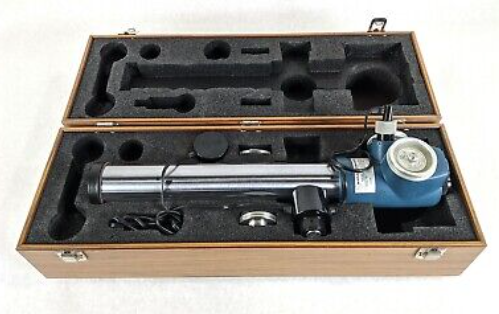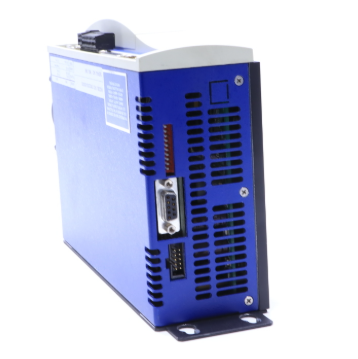The characteristics of each specialty of ship design in the three stages of detailed design, establishment and shipyard
1. Detailed design stage:
Detailed design includes the preliminary scheme (research and development) design, design for approval, other (non-approval) design, etc. In essence, this stage is to meet the requirements of relevant conventions, regulations, rules and norms on the premise of economic, applicability, and original design of the ship, is to solve how to design, why to design a stage.
In this stage:
1) Overall:
The workload of this major focuses on scheme (research and development) design and design for approval, the workload is the least of all the majors, the technical content is the highest, the relevant conventions, regulations, rules and norms involved are the most, need a lot of accumulation, need to have some understanding of each major (not the kind of superficial understanding), it is best to have done several years in each major. Few people can make the overall professional fine, the vast majority of people in the industry are copied, the technical level is general, the master is rare.
2) Structure:
The workload of this major focuses on the design for approval, all structural drawings are basically submitted for approval, and the workload is the largest among all majors. In the detailed design stage, this major needs to carry out qualitative, quantitative, shaping and positioning design. The difficulty lies in the direct calculation under special circumstances, such as some strengthening, force analysis and decomposition of some force transfer process. However, there are related software can assist, this major is faster, easy to learn, because the regularity is relatively strong, essentially speaking, the difference between the ship type is not big, three flow force ship type has done more than two times independently, basically all the ship type can be solved, because the commonality of the structural form is relatively strong, it is easier to become a master.

3) Outfitting:
This major is divided into internal and external assembly, and the workload focuses on scheme (research and development) design, design submitted for approval, and other (non-submitted) design. All drawings do not need to be submitted for approval, and the workload is smaller than that of structural major, but it is also relatively large. At the detailed design stage, this major needs to carry out qualitative, quantitative, shaping and positioning design. The relevant conventions, regulations, rules and norms involved are also more, nearly 75% of the total layout reflects the internal and external assembly, its professional positioning is to meet the use of the ship function, the three mainstream ship types have done more than two times independently, can not become a master, because in general, the regularity is not strong, the difference between the ship types is large, the commonality is not strong, few people can do the professional fine, The vast majority of people in the industry are copying, the technical level is general, do not understand the principle, for passenger ships, the interior requirements are high, the workload is very large.
4) Turbine:
The workload of this major focuses on scheme (research and development) design, design for approval and other (non-approval) design, and all drawings do not need to be submitted for approval. The focus is on the determination of some equipment parameters, which is closely related to the type of main engine and auxiliary engine, whether it is burning heavy oil or diesel oil. For ships burning heavy oil, there are more systems and equipment to be equipped with, and the workload is slightly larger. In the detailed design stage, this major mainly carries out qualitative and quantitative design, and does not need to be shaped and positioned (mainly piping layout). The detailed drawings are mostly system drawings and schematic drawings, in which simple symbols are used to reflect equipment interfaces, piping accessories and detailed lists. The detailed design stage of this major is fast to get started and easy to learn, because of its strong regularity (they are equipped according to mature and fixed systems). The mainstream system of the ship is the same), in essence, there is little difference between the ship types, the commonality is strong, the three major mainstream ship types have been independently done more than two times, basically all the ship types can be solved, and it is easy to become a master.
5) Electrical:
The workload of this major focuses on scheme (research and development) design, design for approval, and other (non-approval) design, and all drawings do not need to be submitted for approval. The focus is also on the determination of some equipment parameters, which is highly relevant to the major of generators and turbines. In the detailed design stage, qualitative and quantitative design is mainly carried out, and no shape positioning is required (mainly cable layout). The workload of the mainstream ship type is only larger than that of the whole, but for the pure electric ship type (full rotation PSV/OSV/DSV and other small Marine engineering ship type), the workload of electrical professional equipment is still relatively large. The detailed drawings are mostly system drawings and schematic drawings, and simple symbols are used in the drawings to reflect the equipment interface, cable accessories and detailed lists. It mainly includes two major areas, the engine room and the cab, the first and second calculation of the power load, easy to learn, because the regularity is relatively strong (are equipped in accordance with the mature fixed system, the mainstream system of the ship is the same), essentially speaking, the difference between the ship types is not big, the commonality is relatively strong, the three mainstream ship types have been independently done more than two times, basically all the ship types can be solved. Easy to become a master.

2. Production design stage:
The production design stage is the stage to solve what method to adopt and what process to build the ship. It serves the production and construction of the shipyard. A good production design can save a lot of materials and labor costs for the shipyard.
In this stage:
1) Overall:
This major does not participate in this stage and has no workload.
2) Structure production design:
The workload of this major is the largest, focusing on the grasp of the site process, section division, lifting and closing, but in general, it is also according to the detailed drawing (the detailed design stage has been qualitative, quantitative, shaping and positioning design, but there is no three-dimensional model) to establish a three-dimensional model, and then produce the site construction drawings, which are also regular and easy to master.
3) Outfitting production design:
The workload of the production design stage of this major is ranked after the Marine engineering major, focusing on meeting the requirements of PSPC, but in general, it is also according to the detailed drawings (the detailed design stage has carried out qualitative, quantitative, shaping, positioning design, but there is no three-dimensional model) to establish a three-dimensional model, and then into the site construction drawings, the ship type is different, the difference is also large, the need to be careful.
4) Turbine production design:
The workload of this major is ranked after the structure, and it is also the most difficult and technical one in the production design stage, because the system drawings of the detailed design stage (only qualitative and quantitative design of the pipe system (only material and specifications, but no length), but not the setting and positioning design. Even if the equipment is only the approximate position) at this stage need to be lofted according to the actual size, the placement of equipment, the layout of piping, the use of all piping accessories, are considered in this stage, a lot of work in the turbine design is concentrated in the production design stage, so the need for more manpower.
5) Electrical production design:
The professional workload after the outfitting, its nature is the same as the turbine production design, detailed stage of the system drawings (only qualitative and quantitative cable (only material and specifications, but no length) design, without setting, positioning design, even if the equipment is only about the location) in this stage need to be lofted according to the actual size, equipment placement, equipment layout, equipment layout, design, design, design and design. The layout of cables and the use of all electrical accessories are considered at this stage, and a great deal of work in electrical design is concentrated in this stage of production design.

Iii. Shipyard stage:
The shipyard construction stage is the stage to solve the problem of how to build the ship. The production schedule management and safety management of the shipyard are particularly important. This stage includes the purchase of steel plates, profiles and equipment of the ship.
In this stage:
1) Overall:
This major has some workload in the completion stage, and it needs to do tilt test. Then it needs to calculate the stability of completion and load according to the weight center of gravity measured by the test, and submit it again for approval.
2) Structure:
This specialty requires the control of drawing quality, feedback of problems, procurement of steel plates and profiles, etc.
3) Outfitting:
This major needs to control the quality of drawings, feedback on problems, equipment procurement, etc. The more equipment, the greater the workload.
4) Turbine:
This major requires the control of drawing quality, problem feedback, equipment procurement, etc. The more equipment, the more workload, so the shipyard (on-site) engineers are basically the most people.
5) Electrical:
This major needs to control the quality of drawings, feedback on problems, equipment procurement, etc. The more equipment, the greater the workload.
- EMERSON
- Honeywell
- CTI
- Rolls-Royce
- General Electric
- Woodward
- Yaskawa
- xYCOM
- Motorola
- Siemens
- Rockwell
- ABB
- B&R
- HIMA
- Construction site
- electricity
- Automobile market
- PLC
- DCS
- Motor drivers
- VSD
- Implications
- cement
- CO2
- CEM
- methane
- Artificial intelligence
- Titanic
- Solar energy
- Hydrogen fuel cell
- Hydrogen and fuel cells
- Hydrogen and oxygen fuel cells
- tyre
- Chemical fiber
- dynamo
- corpuscle
- Pulp and paper
- printing
- fossil
- FANUC
- Food and beverage
- Life science
- Sewage treatment
- Personal care
- electricity
- boats
- infrastructure
- Automobile industry
- metallurgy
- Nuclear power generation
- Geothermal power generation
- Water and wastewater
- Infrastructure construction
- Mine hazard
- steel
- papermaking
- Natural gas industry
- Infrastructure construction
- Power and energy
- Rubber and plastic
- Renewable energy
- pharmacy
- mining
- Plastic industry
- Schneider
- Kongsberg
- NI
- Wind energy
- International petroleum
- International new energy network
- gas
- WATLOW
- ProSoft
- SEW
- wind
- ADVANCED
- Reliance
- YOKOGAWA
- TRICONEX
- FOXBORO
- METSO
- MAN
- Advantest
- ADVANCED
- ALSTOM
- Control Wave
- AB
- AMAT
- STUDER
- KONGSBERG
- MOTOROLA
- DANAHER MOTION
- Bently
- Galil
- EATON
- MOLEX
- Triconex
- DEIF
- B&W
- ZYGO
- Aerotech
- DANFOSS
- KOLLMORGEN
- Beijer
- Endress+Hauser
- MOOG
- KB
- Moxa
- Rexroth


Email:wang@kongjiangauto.com

















































































































